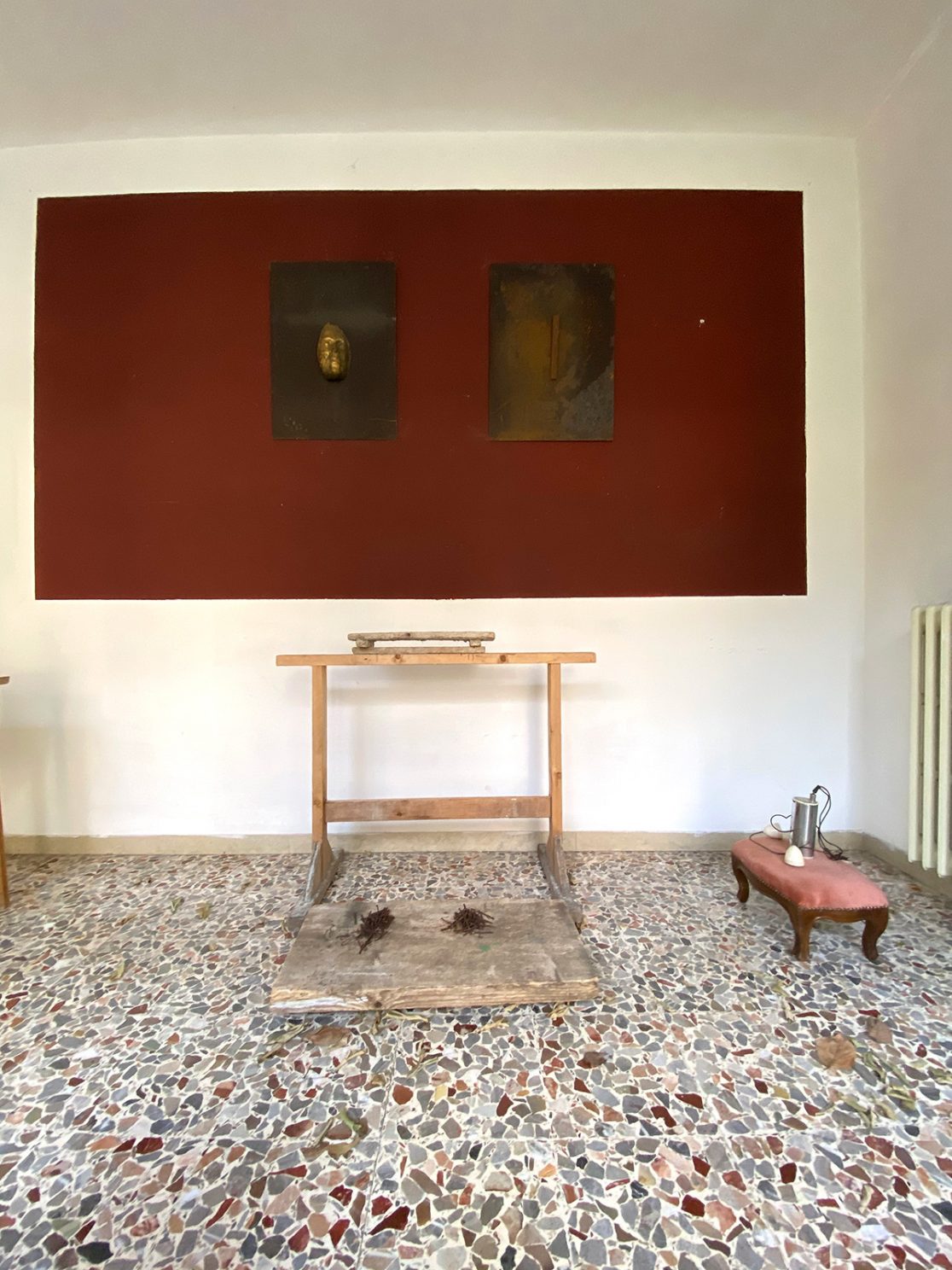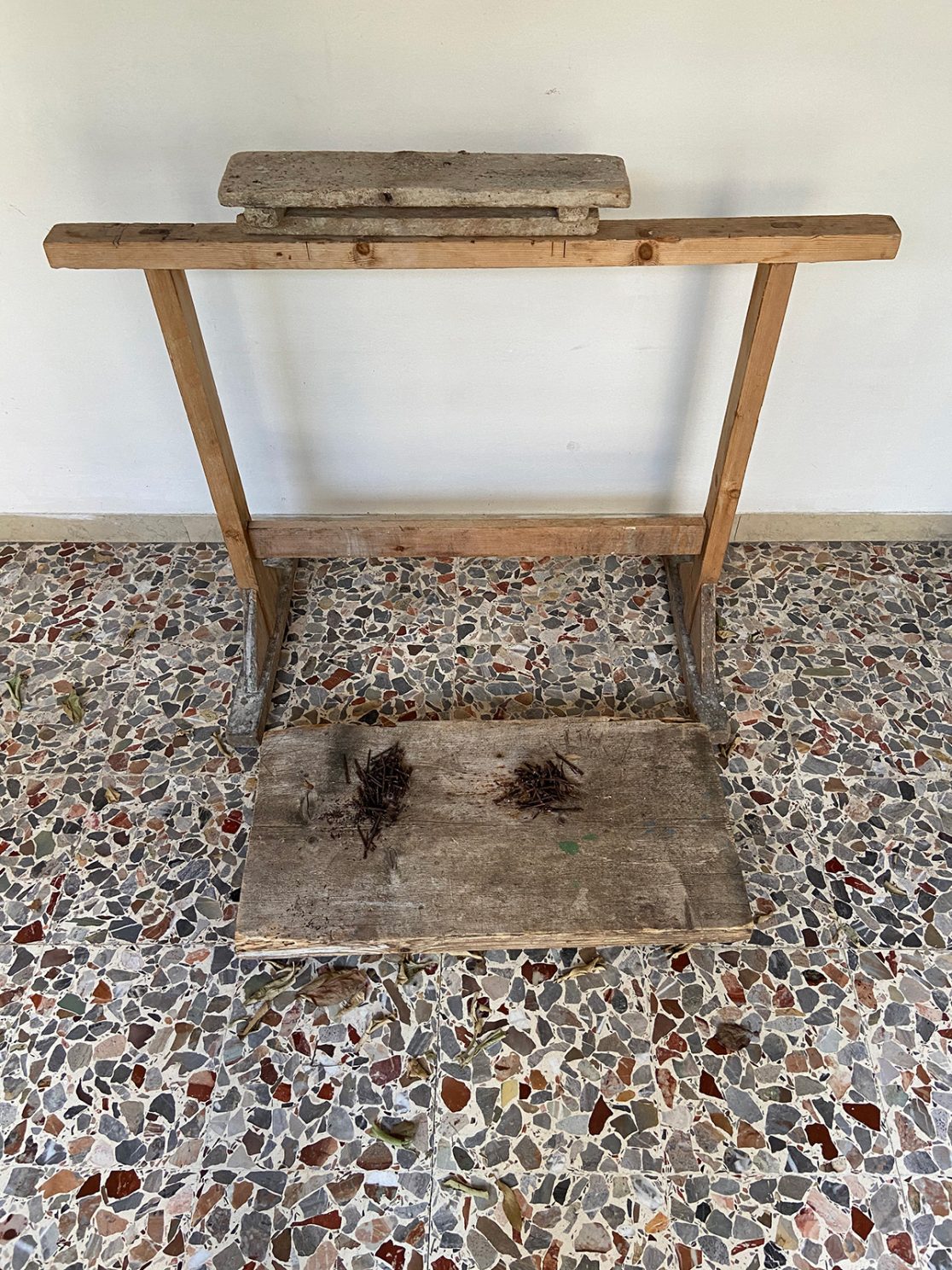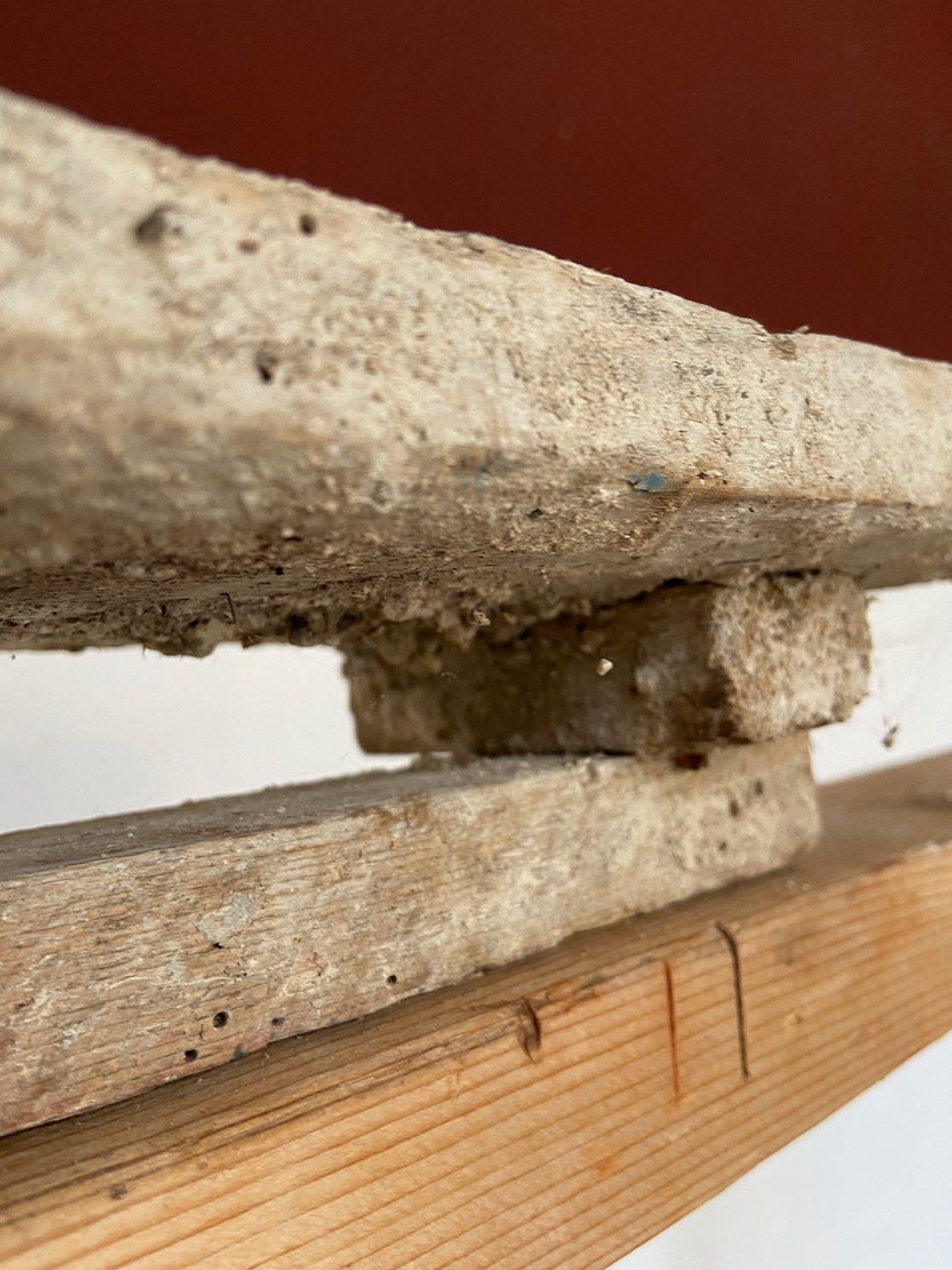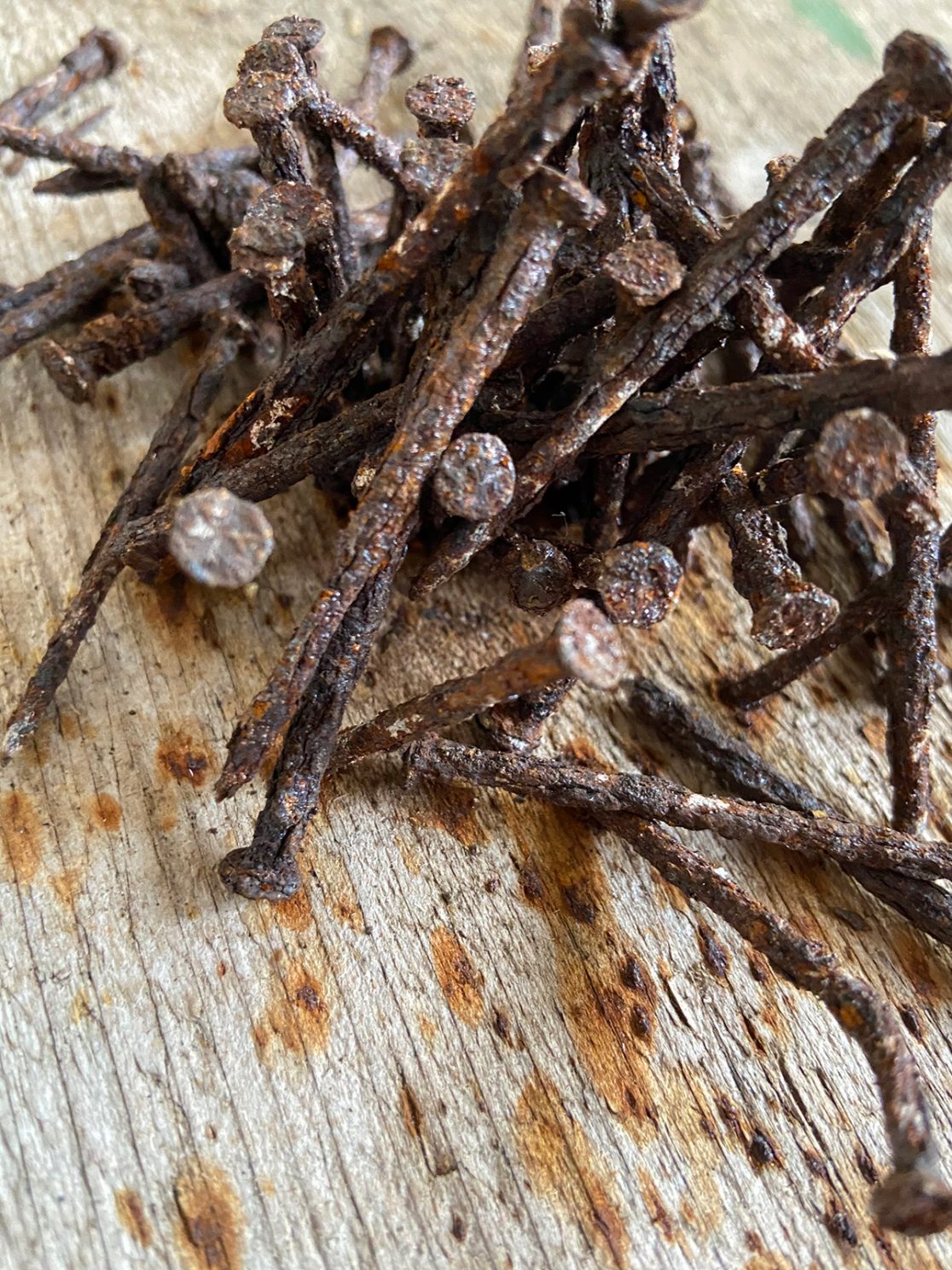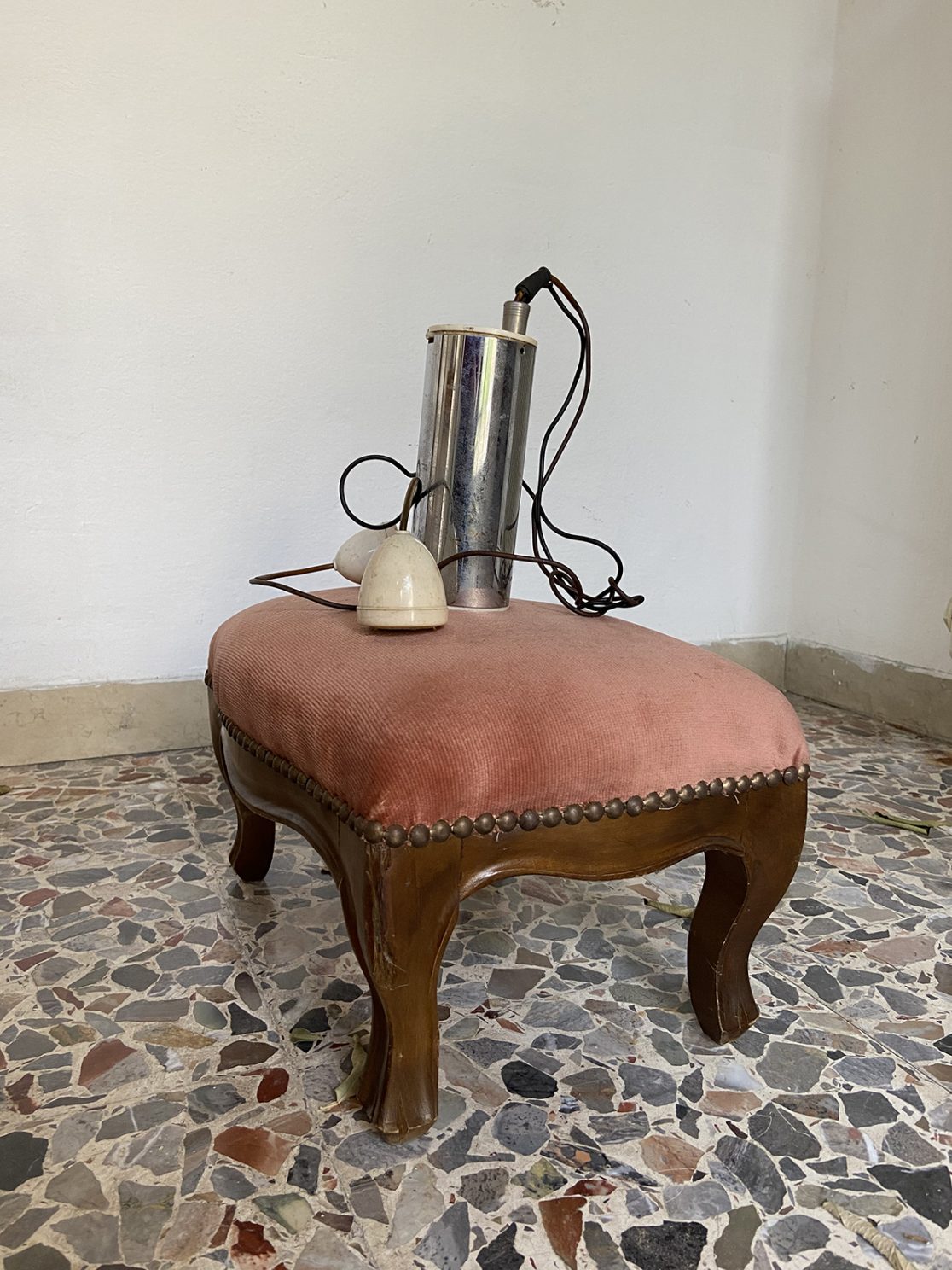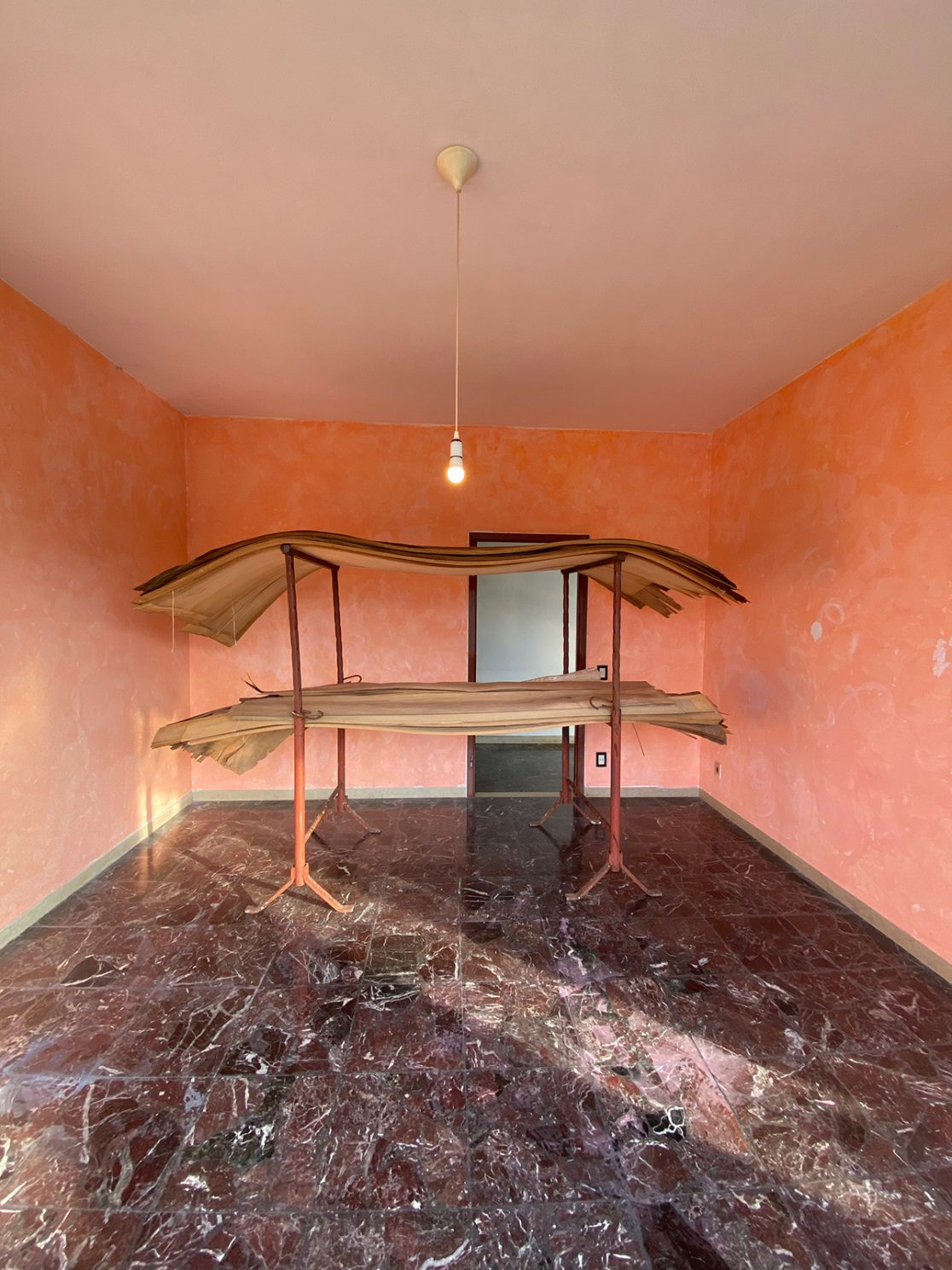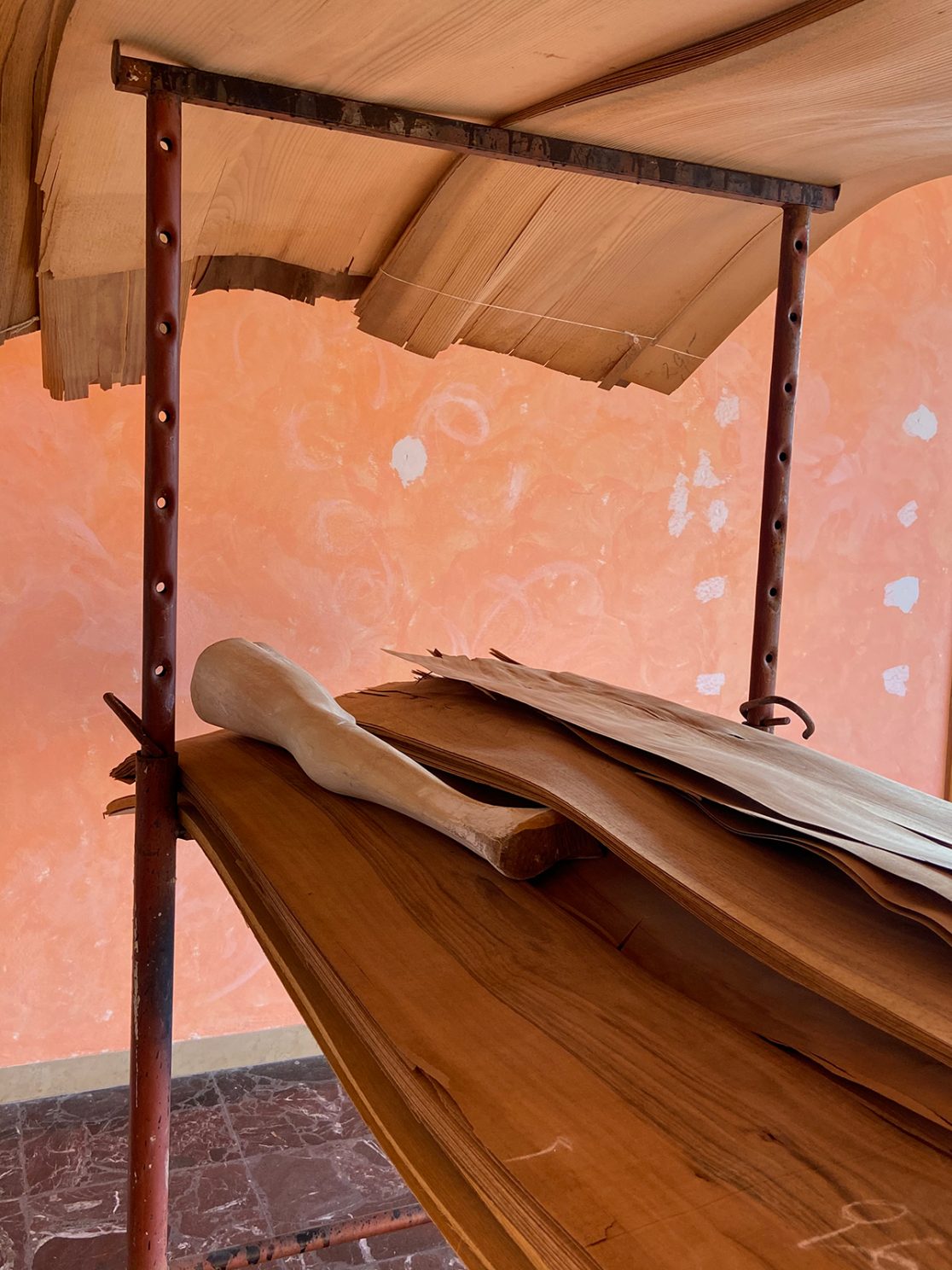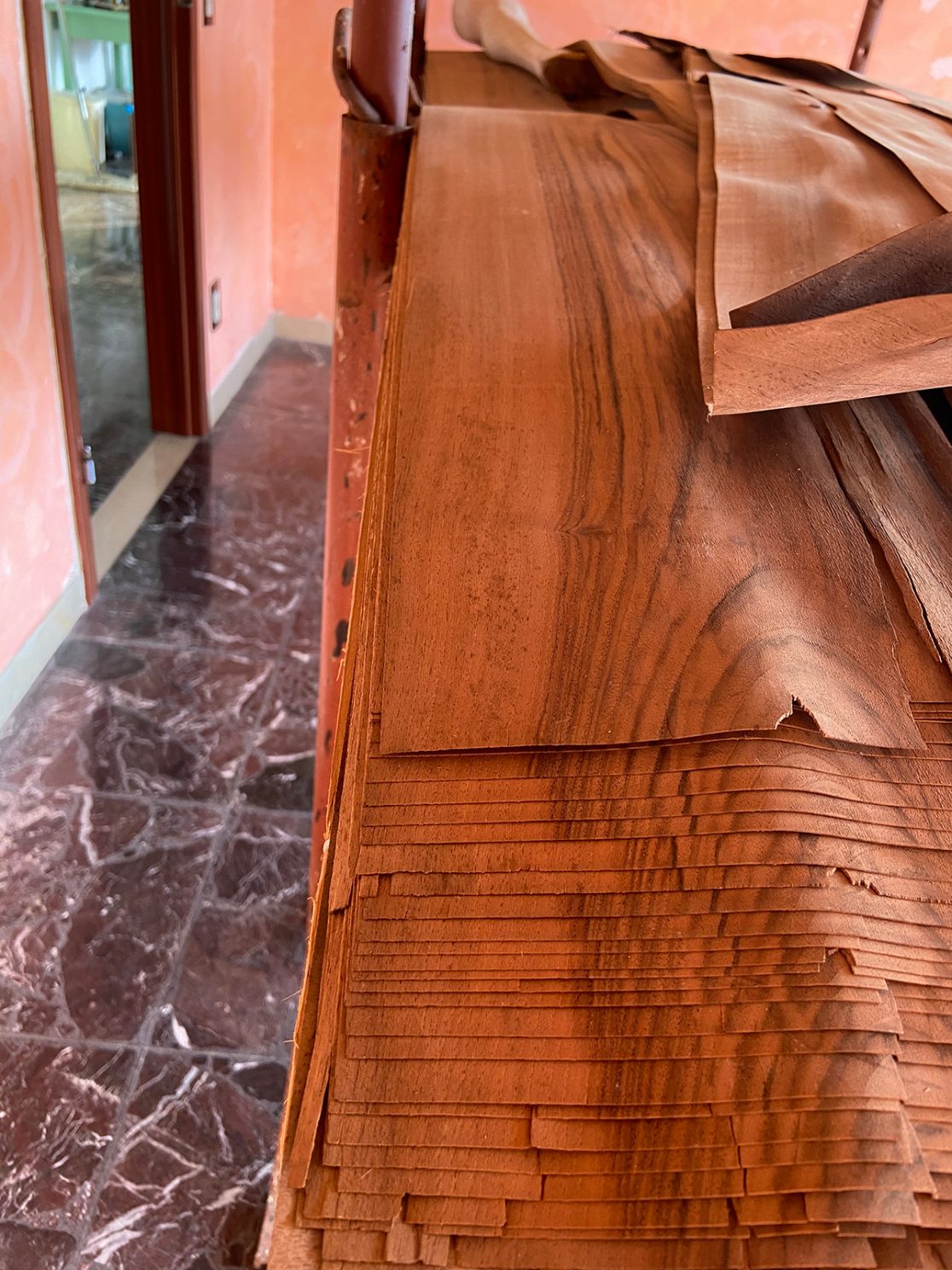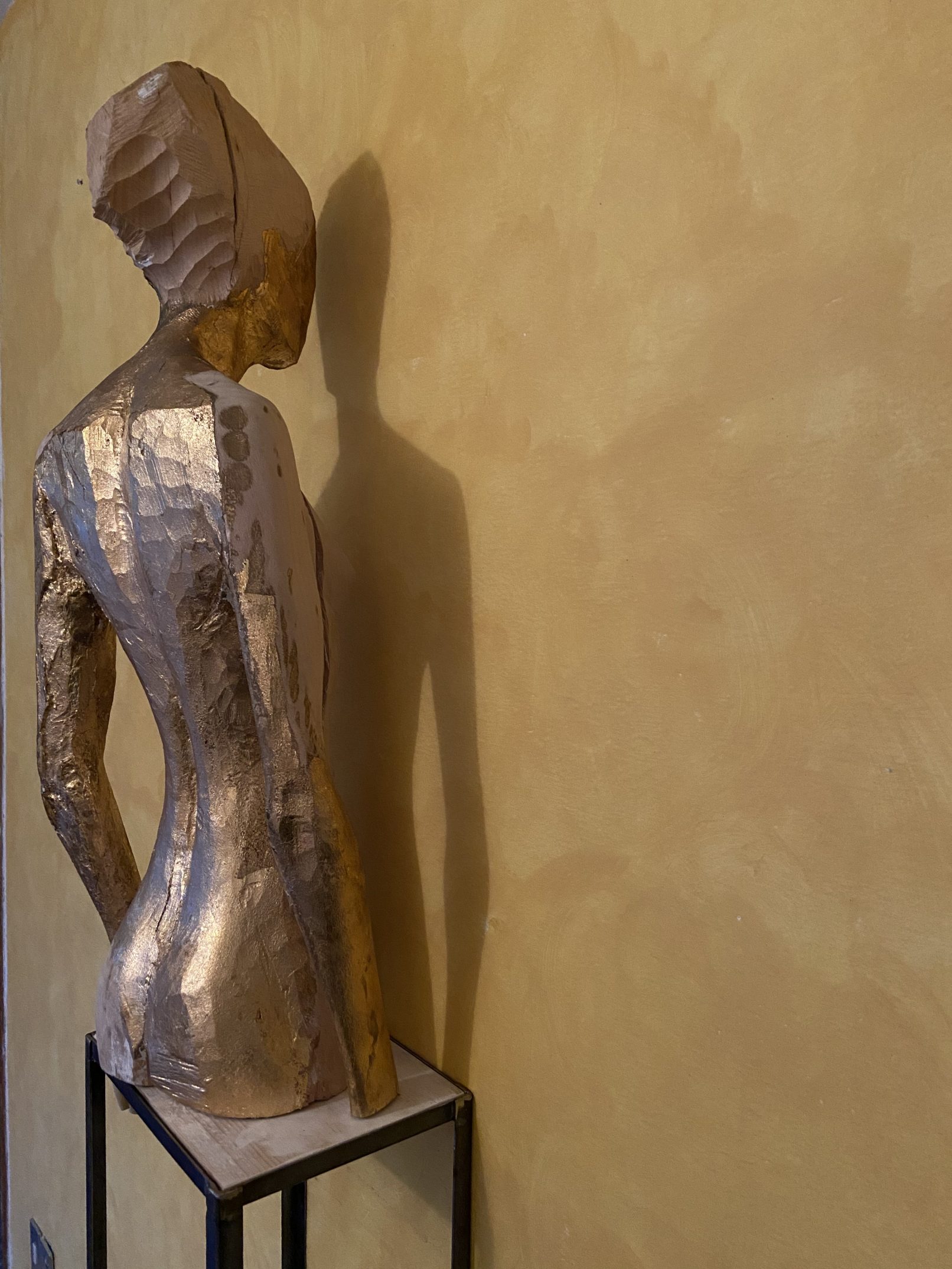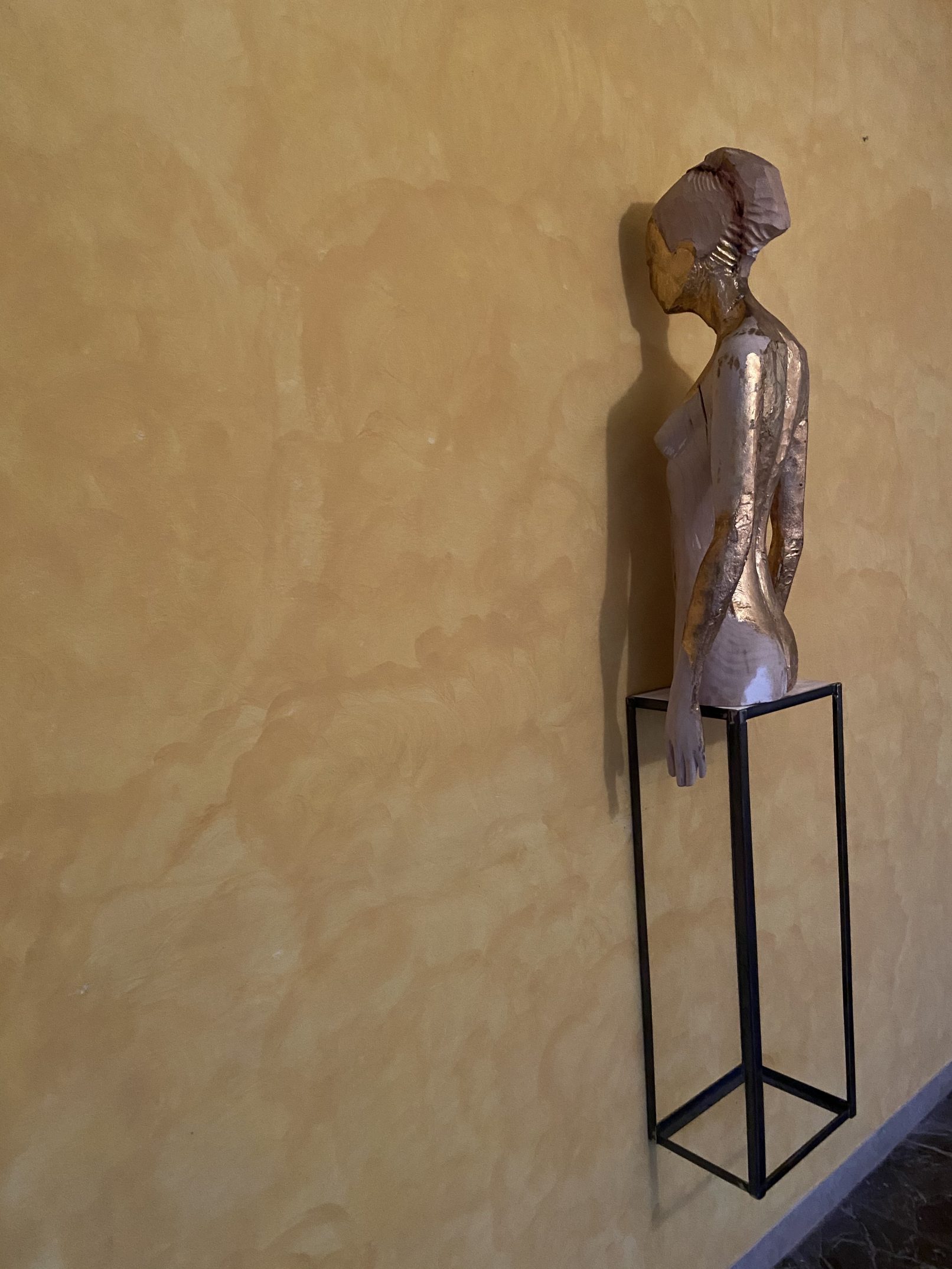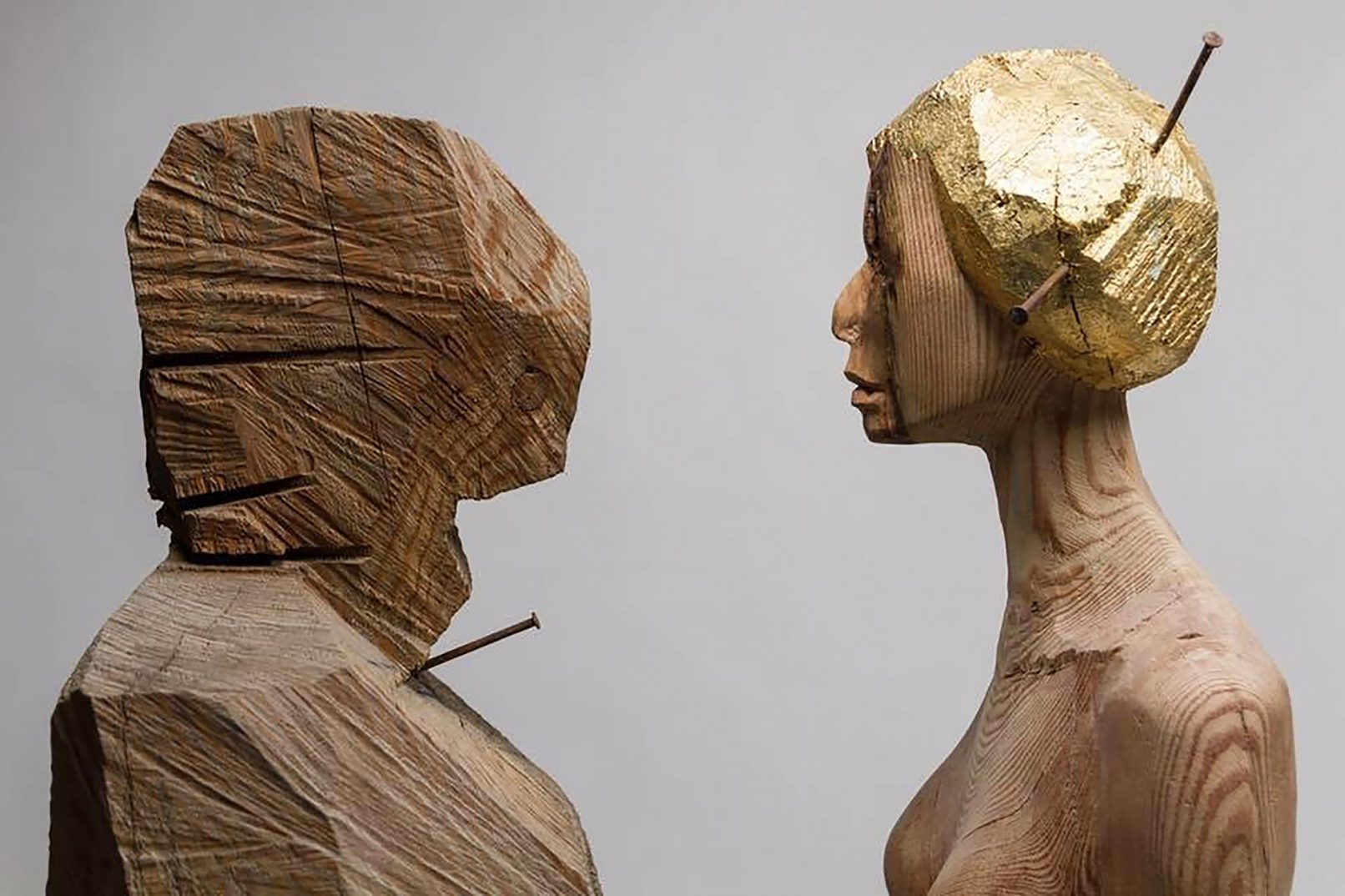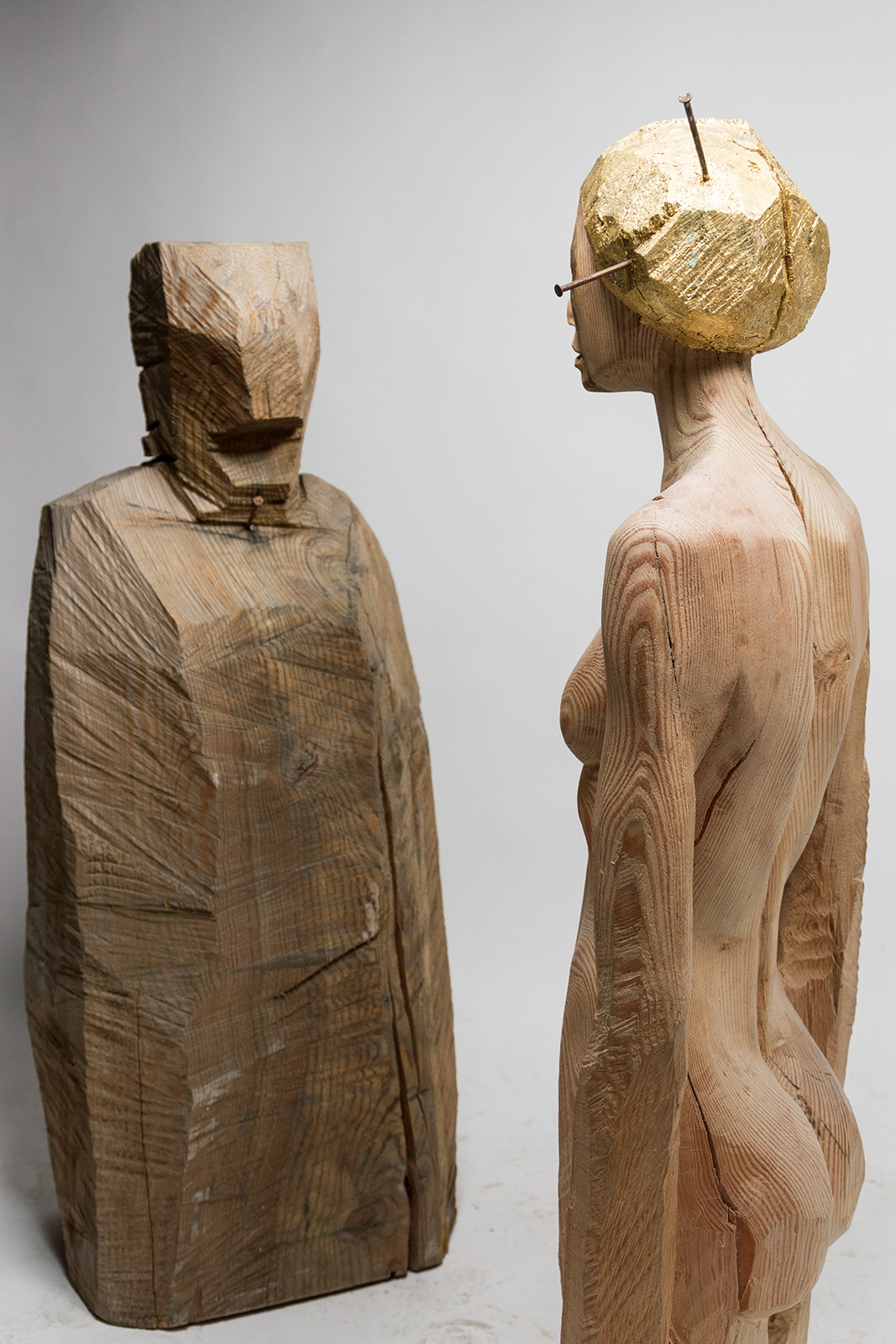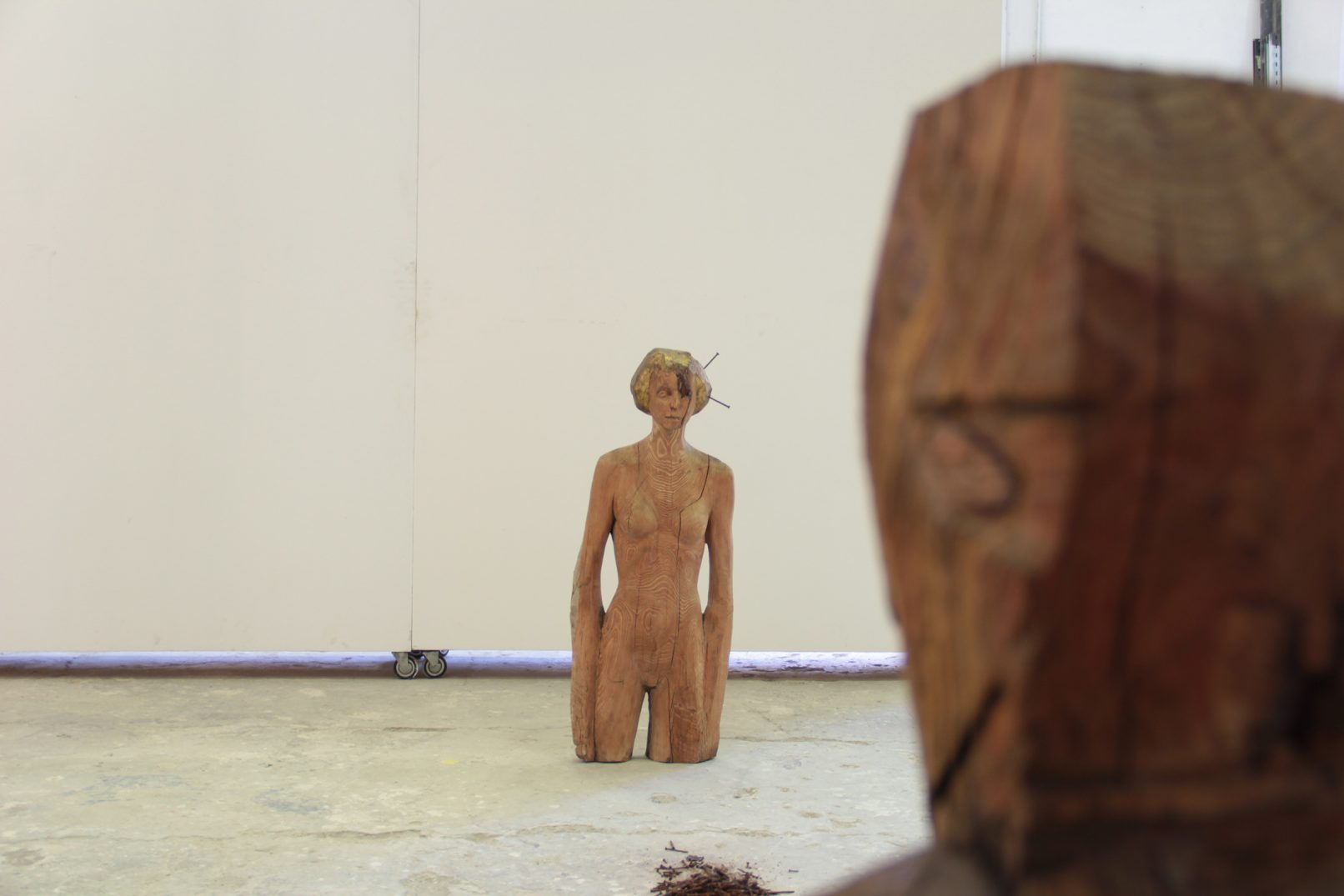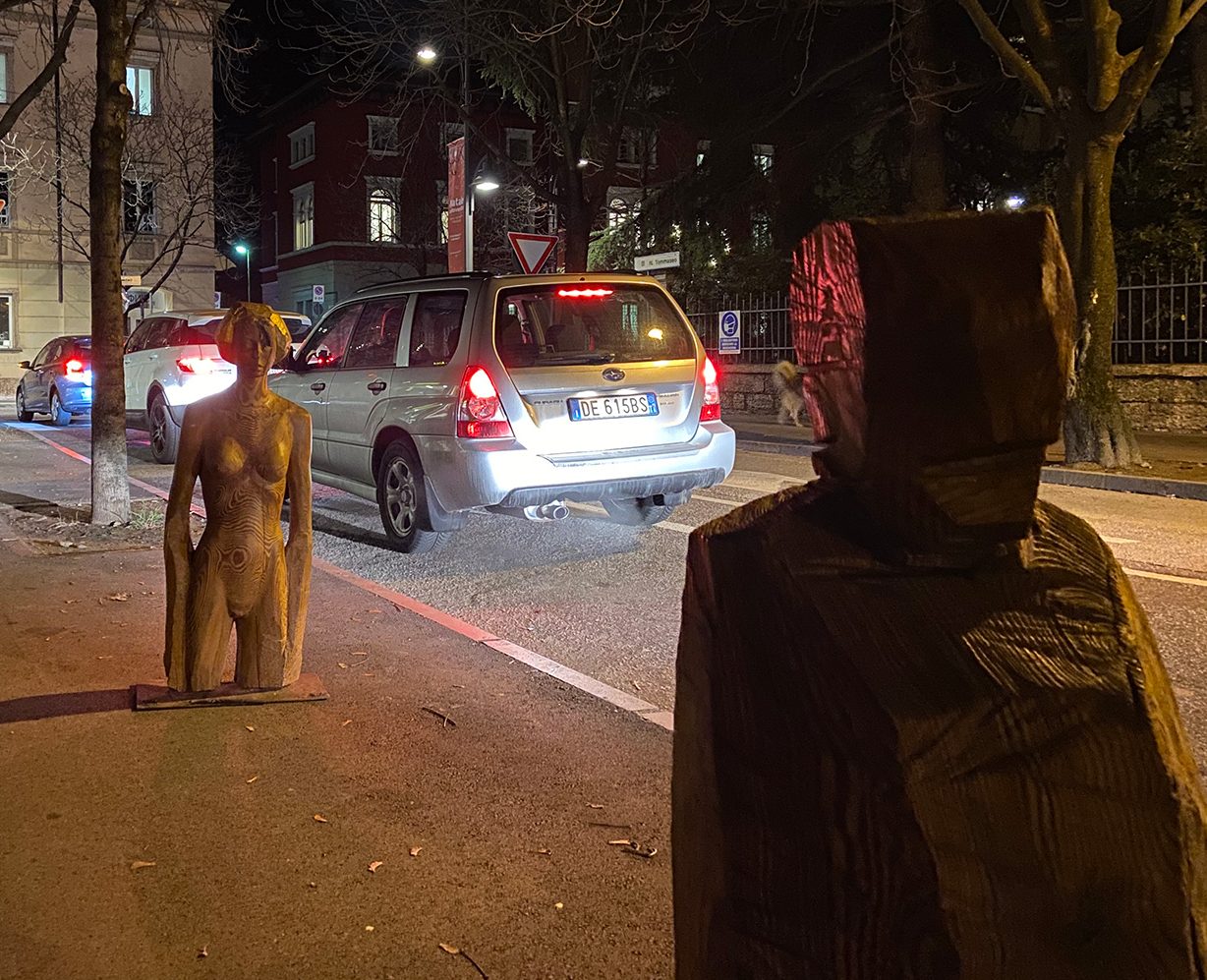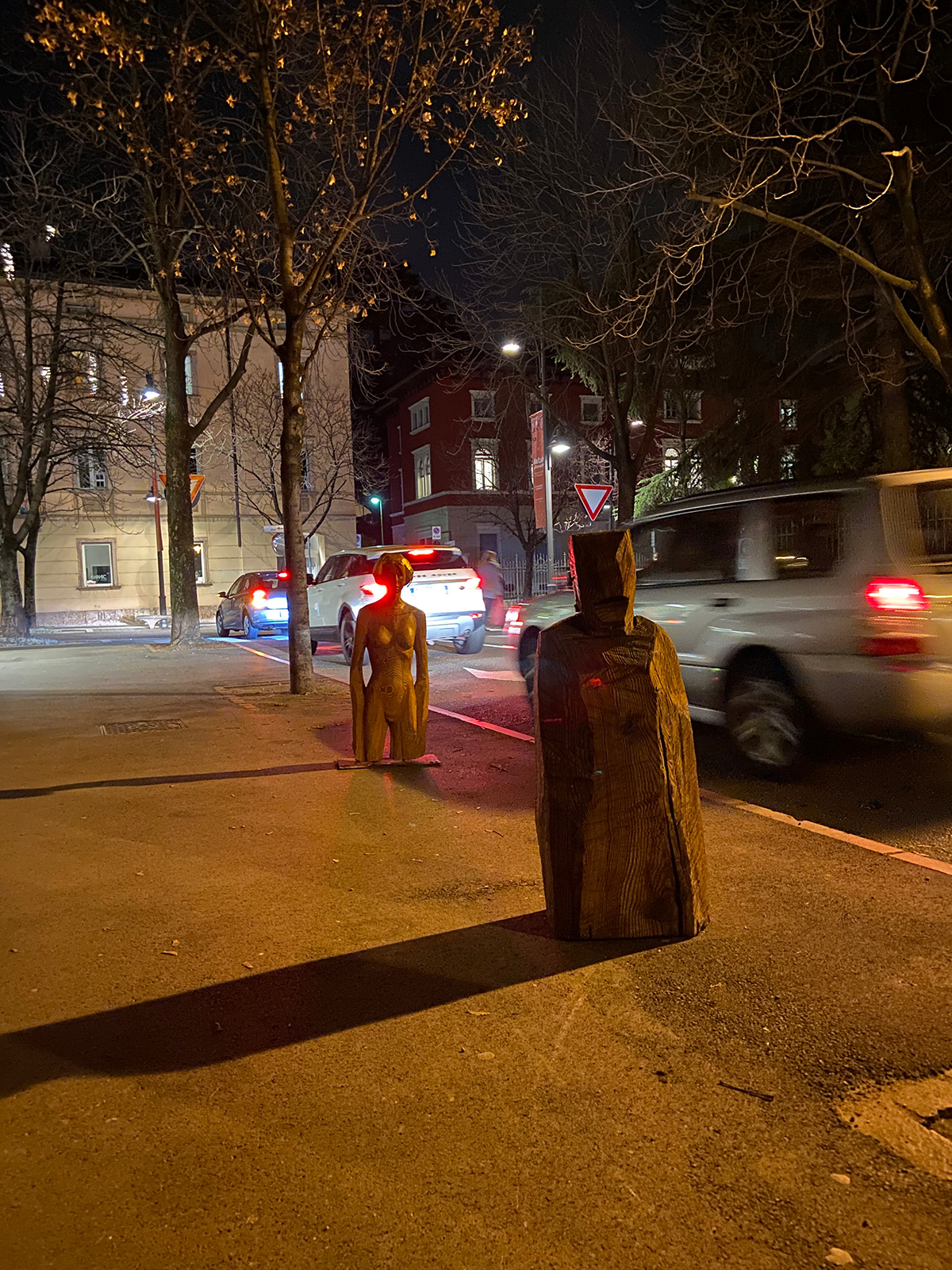«Gli implacabili, per prima cosa, facevano piazza pulita», scriveva Walter Benjamin in Esperienza e povertà (1933), dove immaginava i “nuovi barbari” come coloro che tra le macerie del presente cercavano una via d’uscita, una nuova combinazione per trasformare uno stato aporetico delle cose. Per far questo, i nuovi barbari sono stati costretti a ricominciare da capo. Cogliendo questa suggestione Matteo Manfrini risana il proprio rapporto col mondo nella scelta di un’esperienza povera perché essenziale: steadydiet fa riferimento ad un nutrimento parco, minimo e indispensabile, che allude alla necessità di misurarsi con uno spazio raso al suolo dai bombardamenti visivi e linguistici del nostro tempo. Per questo tabularasa allude a una cernita dei valori, intesa come processo in cui alla rimozione e alla riduzione segue la verifica di quel che resta dell’esperienza stessa, quella vissuta nei luoghi e negli spazi che l’artista abita e osserva mutare, e di cui con la scultura rende presente le tracce.
La serie rappresenta il capitolo di una ricerca sull’immanenza in uno spazio in cui i fenomeni accadono e le cose, semplicemente, stanno. La scultura quindi diventa il mezzo con cui riformulare le modalità dell’abitare e con cui indagare il campo dei rapporti uomo-natura, oggetto-spazio, tecnica-scultura al di là di ogni polarità, e anzi osservando il continuo sconfinare e migrare di questi elementi gli uni negli altri.
Le sculture lignee realizzate tra il 2004 e il 2018, insieme alle installazioni site-specific, potrebbero raccontare a più livelli la storia di tre vite, quella dell’artista, quella dei larici trentini da cui le opere nascono e quella degli oggetti utilizzati nelle fasi del lavoro oppure recuperati dalla vita di qualcun altro. L’opera segnala ciò che resta di queste storie e le rende immagini presenti nella materia profonda da cui esse provengono. Il larice richiama il dato biografico e la scelta abitativa di un luogo radicale – nell’accezione botanica del termine, relativo ad una radice profonda ed essenziale che Manfrini fa propria; l’impiallacciatura conserva l’essenza del legno e ne evoca le possibili metamorfosi. Ancora, l’intento evocativo è particolarmente forte negli oggetti che l’artista priva dell’originaria funzione, riducendoli a oggetti estetici che attivano un rapporto esclusivamente visivo. Estetici quanto ironici, gli oggetti di Manfrini hanno tutti avuto una funzione pratica e una vita precedente, che a volte sembrano persino rivendicare.
Nel far piazza pulita, l’azione di riduzione è anche uno svelamento della natura dell’opera. Su alcune sculture, in particolare, è applicata la foglia d’ottonella che veste le figure di un sottile strato dorato. Nel confrontarsi con la tradizione che risale alla scultura lignea e policroma di un Medioevo sacro e artigianale, Manfrini volge il suo sguardo anche al vuoto di immagine creato dai capricci estetici che rendono la decorazione un’ossessione. Infatti, il finto oro è destinato a svelare la sua povertà: l’ottonella sottopone la superficie dorata a processi di ossidazione e reazione all’atmosfera in cui l’opera come ogni altro essere vivente e presente è immersa. I corpi funzionano quindi come dispositivi diacronici che esplorano soprattutto spazi di tempo. Le figure sembrano esistere soltanto in potenza, sono grossolane sembianze lasciate aperte al divenire. Così, steadydiet è popolata da una nuova specie vivente, una tribù che a tratti è vestita d’oro solo per smascherarsi e mostrarsi nella durata: una specie messa al mondo dall’artista per rispondere all’esigenza di desublimare lo spazio e il sistema delle immagini e restituirne poi un’esperienza immediata. Affiora nelle sculture la dimensione dell’archetipo: esse sono un principio originario e contemporaneo al tempo stesso, con cui Manfrini mette in discussione il culto della tecnica attraverso una tecnica di culto storicamente legata agli oggetti di devozione.
Ilaria Monti
eng
Recording devices for what’s left and what changes.
«There have always been the inexorable ones who begin by clearing a tabula rasa» said Walter Benjamin in Experience and Poverty (1933). He imagined new barbarians as the ones who were seeking for a way out among the ruins, the ones who were seeking for a new combination to alter the aporetic state of things they were in. The new barbarians were forced to start over. Similarly, Matteo Manfrini restores his own relationship with the world in the poverty of experience: tabularasa is like a sorting of values, a removing process to verify the immanence intended as what remains of the experience itself.
According to Deleuze «immanence is a life, and nothing else». It is therefore something that deals with what exists and resists (and makes a stand, survives). This is why Manfrini also relates immanence to the question of habitat, in need of reshaping the way we exist in the world, with a focus on the relationships man-nature and object-space, which are not considered to be opposing pairs, but elements so close that constantly cross and migrate into each other. Hence the necessity to take into account all that sculpture implies: the saw, the carving tools, the tripods with its worktop, technical objects which mechanically allow the artist to shape the matter. Then, once they have lost their practical function, they turn into esthetic objects, becoming witnesses both of the artistic process and craft. This train of thoughts gave birth to steadydiet; the sculptures produced between 2004 and 2018, along with the site-specific installation, may be considered the result of a research on the immanence of sculptural form in the making and unmaking of the image, and the result of the relationship with the places where the artist has lived.
Manfrini’s practice always aims to an action of sorting and removing, and in this sense steadydiet refers to a poor nourishment, minimum and essential, basically the way someone who is on a strict diet eats. The human figures stand hieratic and their shape is barely roughed down; some of them still have the sapwood’s veining and colors typical of the larch, the tree from which they are born and of which, above all, they keep the inner life, namely the nature that is still alive in the wood fibres and enclosed within the veneer. These sculptures could tell the story of centuries-old larches which witnessed the human activities in the woods of Trentino over all these years: here is where the artist lives, and it’s the grounded place related to that deep, essential root that Manfrini conveys in his sculptures.
Some works have a brass leaf applied on the surface: the fake gold recalls the polychrome wooden sculptures from Middle Ages, especially in its sacred and artisan dimension. But, at the same time, it hints at that void which, obsessively poured out, can be found below all those ornaments. The golden layer is bound to reveal its poverty: the brass leads the sculpture to an oxidation process for which we can see that they, like every other body, cannot avoid the reaction with the atmosphere which surrounds them – it is a consequence of being present. In fact, steadydiet humanoids may function as diachronic devices which are able to explore spaces made of time; their features are merely a suggestion of lines and one can say that these sculptures are like developing beings for the unfinished bodies that still have to become. Thus, steadydiet is a new living species, a small tribe, dressed in gold sometimes to reveal its perishable nature recording the passing of time. The artist brought this tribe into the world to meet the need for an immediate experience – a poor experience happening like so because substantial – that is only possible through a de-sublimation of the space and the system of images. Eventually, these works evoke an archetypical power: they are like a primal and yet contemporary principle that Manfrini uses while questioning the cult of technique via the technique of cult, historically tied to devotional objects.
Ilaria Monti

